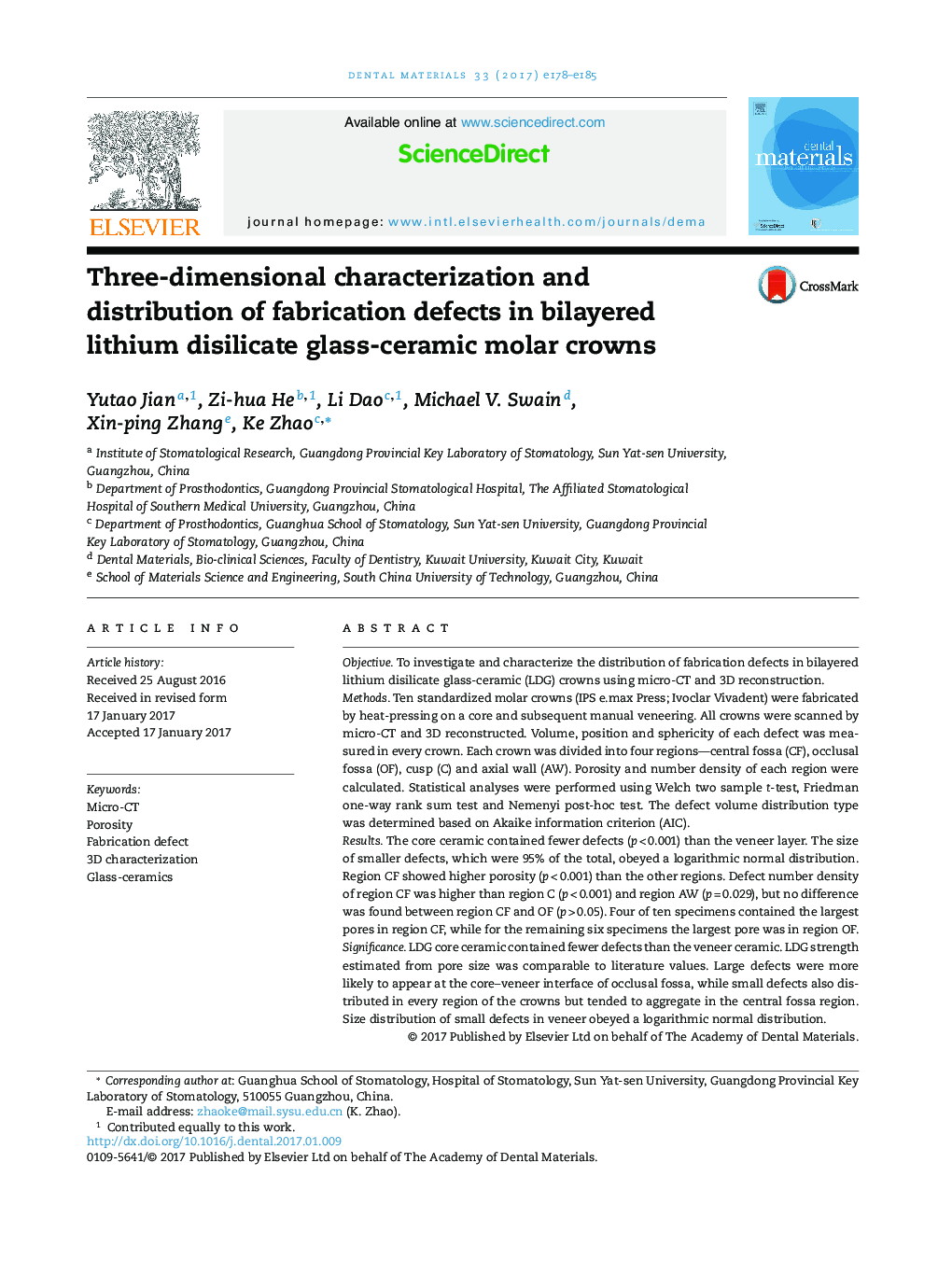| کد مقاله | کد نشریه | سال انتشار | مقاله انگلیسی | نسخه تمام متن |
|---|---|---|---|---|
| 5432906 | 1398046 | 2017 | 8 صفحه PDF | دانلود رایگان |
ObjectiveTo investigate and characterize the distribution of fabrication defects in bilayered lithium disilicate glass-ceramic (LDG) crowns using micro-CT and 3D reconstruction.MethodsTen standardized molar crowns (IPS e.max Press; Ivoclar Vivadent) were fabricated by heat-pressing on a core and subsequent manual veneering. All crowns were scanned by micro-CT and 3D reconstructed. Volume, position and sphericity of each defect was measured in every crown. Each crown was divided into four regions-central fossa (CF), occlusal fossa (OF), cusp (C) and axial wall (AW). Porosity and number density of each region were calculated. Statistical analyses were performed using Welch two sample t-test, Friedman one-way rank sum test and Nemenyi post-hoc test. The defect volume distribution type was determined based on Akaike information criterion (AIC).ResultsThe core ceramic contained fewer defects (p < 0.001) than the veneer layer. The size of smaller defects, which were 95% of the total, obeyed a logarithmic normal distribution. Region CF showed higher porosity (p < 0.001) than the other regions. Defect number density of region CF was higher than region C (p < 0.001) and region AW (p = 0.029), but no difference was found between region CF and OF (p > 0.05). Four of ten specimens contained the largest pores in region CF, while for the remaining six specimens the largest pore was in region OF.SignificanceLDG core ceramic contained fewer defects than the veneer ceramic. LDG strength estimated from pore size was comparable to literature values. Large defects were more likely to appear at the core-veneer interface of occlusal fossa, while small defects also distributed in every region of the crowns but tended to aggregate in the central fossa region. Size distribution of small defects in veneer obeyed a logarithmic normal distribution.
Journal: Dental Materials - Volume 33, Issue 4, April 2017, Pages e178-e185
